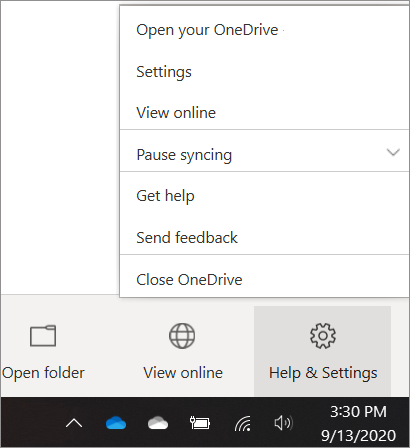
Otherwise if you’re starting fresh, there’s a great guide here to go through. If you’re migrating from an existing install, then you’ll need to follow this process.
#One drive microsoft sign in windows 10
Since OneDrive is part of Windows 10 now, if you aren’t ready for this or don’t want it yet, you’ll need to use the Group Policy setting ‘Prevent the usage of OneDrive for file storage’ which is found in Computer Settings > Policies > Administrative Tempates > Windows Components > OneDrive (note that this is different to the location of where the above new policies sit for OneDrive, which is one level down straight under Administrative Templates). OneDrive.exe is the new client, where Groove.exe is the older. The newer client has much less syncing issues too – if you’re not sure what one you’re using, check what executable is running. There’s no deployment of the app required then, so you won’t need to use or modify OneDrive for Business. You’ll need Windows 10 1709+ for this, as that’s the first version of Windows 10 that has OneDrive baked in. It’s just OneDrive now, even though the backend is OneDrive for Business as part of an Office 365 subscription. OneDrive for Business from the client’s perspective has been dropped. You can even work with people outside your business, sharing secure files in real-time, and connecting them up to OneNote, Word, PowerPoint, Excel, and more, across any platform-web, mobile, or desktop.If you’re looking at starting to use OneDrive for Business and you’re working with a PCs joined to a local domain, you can now have a seamless sign in experience for end users (Note that the Group Policy setting for this is in preview according to the documentation).

With the flexible capacity to configure channels to suit all aspects of your business, this could be an amazing way to improve your company's productivity. Related: The Best Office 365 Business Tools to Skyrocket Your Productivity Once uploaded, you can simply click to share files to Teams channels, and team members can start commenting or making changes from the get-go. Designed for business, you can access, create, share, and change files from anywhere, with different levels of access to different tiers of employees or coworkers-office workers up to higher management.īoasting even bigger file sizes and libraries, you can create sharable links, grant access that expires over time, and configure rules for visibility and security. Likewise, everything is automatically synced up to the cloud wherever you are, and files are available to you from any device as long as you're logged in.įor larger organizations or businesses, upgrading to OneDrive business gives even more advantages, and integrates to Teams with the exact same level of fluidity and efficiency. If you're using Teams across multiple workspaces or organizations, the syncing feature can be configured to automatically sync files to different places in your OneDrive, meaning that your files are always orderly and accessible, in a system you're familiar with. Related: Useful OneDrive Tips to Get the Most Out of Your Account

Traveling to work via public transport, hitting the skies for a holiday, or heading into a meeting in the park with your classmates, you can have access and can collaborate on all of your files with this feature.
#One drive microsoft sign in Offline
Offline use for content you have selected allows you to keep working on the go, and wherever you don't have internet access. That is indeed the question! Why use syncing across OneDrive and Teams? Why wouldn't I just save them onto my local drive? Or keep communications and files separate? There are a bunch of different benefits that can make this integration feature super useful.


 0 kommentar(er)
0 kommentar(er)
